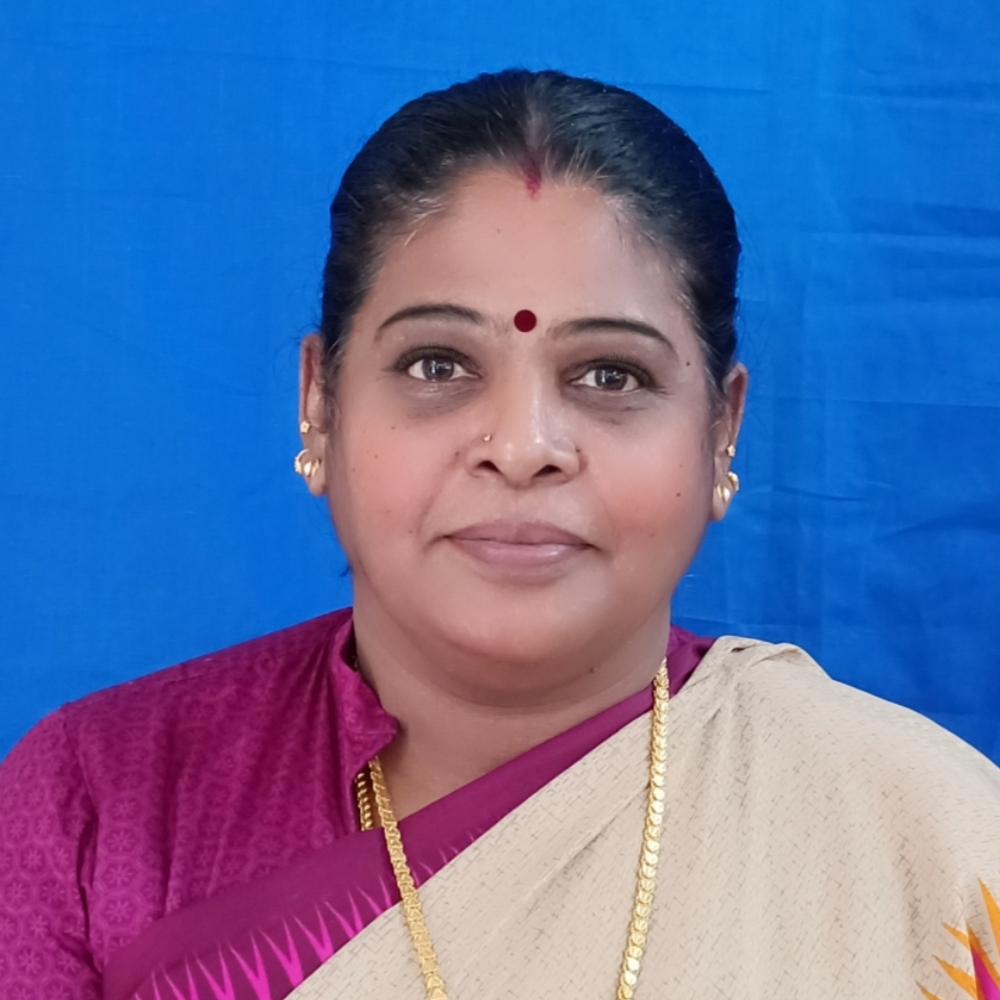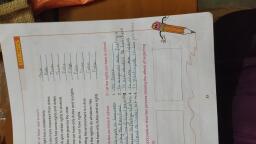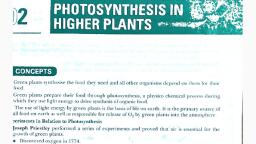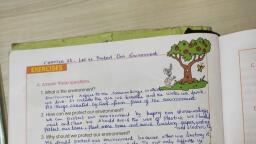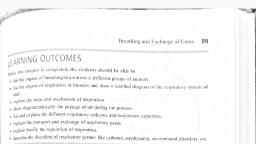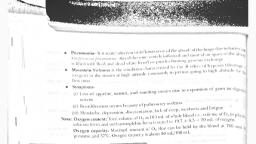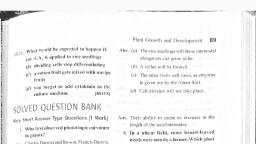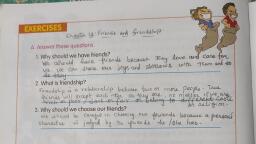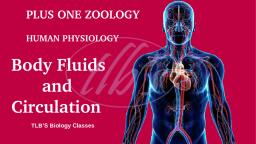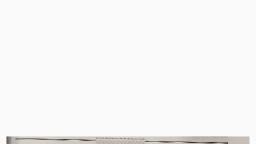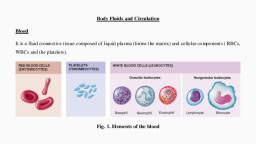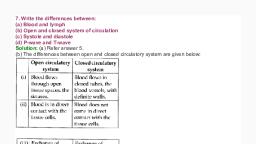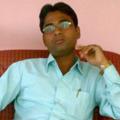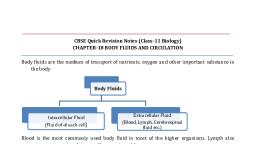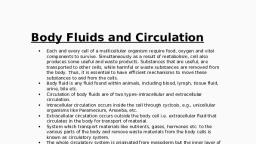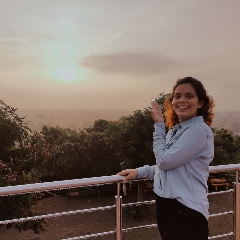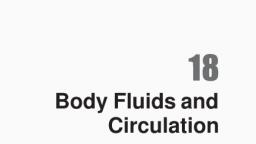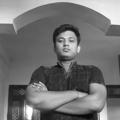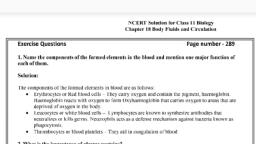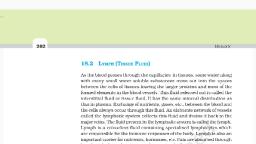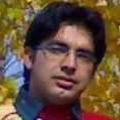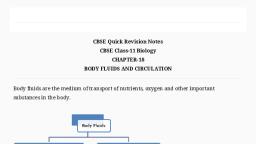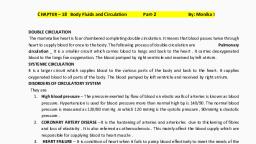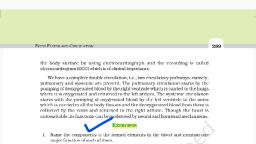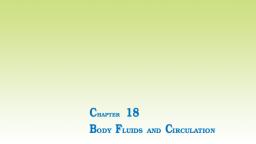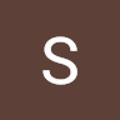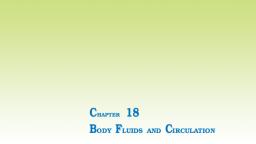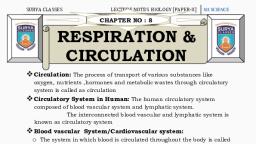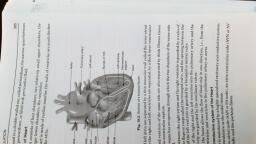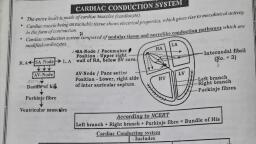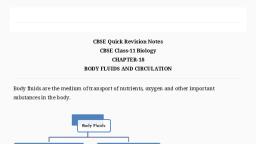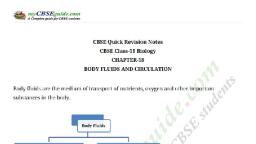Page 1 :
" NCERT TEXTBOOK QUESTIONS on, 1. Name the components of the formed elements in the blood and mention one major Funct (left <, each of them. . ] The, Ans. The components of the formed elements in blood are as follows: | bias, (@) Erythrocytes or red blood cells— They carry oxygen and contain the pigment, haemogy deox, Haemoglobin reacts with oxygen to form oxyhaemoglobin that carries OXY BEN tO ares Tape, are deprived of oxygen in the body. P, (i) Leucocytes or white blood cells — Lymphocytes are known to synthesize antibodies ? I, neutralizes or kills germs. Neutrophils acts as a defense mechanism against bacteria {jp LY,, as phagocytosis. (ii) |, (i) Thrombocytes or blood platelets - They aid in coagulation of blood. t en, 2. What is the importance of plasma proteins? «i (, Ans. Fibrinogen, globulin and albumins are the proteins found in plasma. Fibrinogens are neete!’ “ \, clotting of blood. Globulins are involved in defence mechanisms of the body and albumin (att) :, in osmotic balance. (iv) }, 3. Match column I with column II. is @, Column I Column II "), (a) Eosinophils (i) Coagulation, (6) RBC (ii) Universal recipient, (c) AB group (iii) Resist infections, , (d) Platelets, (e) Systole, Ans. (a) Eosinophils, (b) RBC, (c) AB blood group, (d) Platelets, (2) Systole, , Biology-XI: Term-2, , , , (iv) Contraction of heart, (v) Gas transport, , (1) Resist infections, , (v) Gas transport, , (i) Universal recipient, ()) Coagulation, , (wv) Contraction of heart
Page 2 :
plood as a connective tissue?, ny mesoderm and contains an extra-cellular matrix known as plasma, 1 is, ly distributed tissue in the body., , ove consider, i ye gerived fron, “ pow ait and aw ide! ee tent :, pnd issues links and binds, providing support to other organs of the bedy thereby, connect Foxyget and other nutrients within the body, eliminating wastes from the body and, a how the body. Hence, itis considered as a connective tissue., ows TOUS, 5 o isthe differen®, , isd, , , , ¢ between lymph and blood?, , , , , , , , , > yellow in colour., , , , , , , , , , , Reddish in colour., , , , Red blood cells are absent., , \ _|, , [Unidirectional flow. _\, , \ i, ‘|, |, , , , Flow is slow., Leucocyte count is relatively less. | High leucocyte count., , Pinwelets are present. [ Platelets are absent., , §. What is meant by double circulation? What is its significance?, gs, When the blood flows twice through the heart, it is called double circulation., Pulmonary and systemic circulation:, The pulmonary circulation pertains to lungs. The blood flows from the right ventricle to the, lungs. Pulmonary veins collect oxygenated blood from the lungs and carry it back to the heart, (left auricle)., The systemic circulation pertains to the major circulation of the body. The aorta receives the, blood from the left ventricle and sends it to the various parts of the body. Veins collect the, deoxygenated blood from the body parts and pour it back into the right auricle., Importance of double circulation:, a of circulation checks and prevents the mixing of oxygenated and deoxygenated, lood,, i ee double: circulation, oxygen is utilized efficiently., rite the differences between:, a Blood and Lymph, o ai Cloxed system of circulation, ti) Pane le and Diastole, ve and T-wave, , * (OR, ') Refer to NCERT ‘Textbook Questions, Q. 5, , , , , , , (i), A ee Ny paneer Tener es, _ Open circulatory system. ssjs|nui Closed circulatory SyStOM). osu, , , , , , , , , e open circulatory system, blood flows | In closed circulatory system blood flow, through large vessels into open spaces through closed network of blood vessels., called sinuses., , , , , , Blood flow is less regulated. Blood flows at high speed and is regular, in a better way., , , , The pressure of blood flow is low. ‘The pressure of blood flow is high., , , , Eg, Arthropods and Molluscs [Es Annelids and Chordates, , , , Body Fluids and Circulatio
Page 3 :
axed in this phase., , , , Systole, Blood vessels are rel, , , , , , , , , , , , 1s they are com, , nd filled with blood, , Blood vesse}, , phase., , axed al, , , , Ventricles are rel, in this phase, , , , ush the, , , , Yenuricles are ¢ Satracted and they P, , blood in this phase:, , , , , ‘T-wave, , mm (ECG), the T-wave, Jaxation., , , , Iman elecwrocardiog!®, represent ventricular re, During this phase,, return to their nor, , , , , , , , , , (ECG), the p-wave, , fthe SA node., , the impulse, he SA node,, , , , ardiogra™, , ation Oo, icles relax and, , In an electro, , indicates the act, , the venti, mal state., , , , , , , , , , , of, , , , , , , , , , , During this phase,, contraction is generated by t, ceasing atrial depolarisaio™s, , , , , , Iris of ventricular origin, , , , heart among the vertebrates:, Jation for oxygenated, , no separate circu!, he atrium of amphibians. This, , utionary change in the pattern of, , 8. Describe the evol, rs, U, , The heart of fish, , his means there is, , hambers in, , has two chambe!, ration of two ©), , and deoxygenated plood. There is S¢P®, has further evolved to partial separation of ventricle in reptiles., Finally in birds there is complete separation of oxygenated and deoxygenated blood circulation, with advent of four chambers in the heart., Mammal heart is the most developed having the most efficient double circulatory system., g, Why do we call our heart myogenic?, i.e., auto regulated by specialised muscles, , activities of the heart are regulated intrinsically,, , hence the heart is called myogenic., , 10, Sino-atrial node is called the pacemaker of our heart. Why?, m number of action potentials,, , Ans. The SAN can gene, , is responsible for initiating and m: thmic contractile activity 0!, Therefore, itis called the pacemaker., , 11. What is the significance of atrio-ventricular node and atrio-ventricular bundle in, , functioning of heart?, The atrio-ventricular bundle, , Ans. Normal, (nodal tissue),, , rate th xi i in”, e the maximu ie., 70-75 min 1 and, f the heat, , aintaining the rhy, , AV bundle originating from the AV node passes the cardiac impul, mpulse frot!, , to the walls of the ventricles whereas the atrio-ventricular node (AVN) conveys the i, ial that is original, , a ns node. Both AVN and AV bundle are triggered by the action potenu:, » the sino-atria i, y the sino: atrial node thereby conducting the stimulus to the other parts of the heart., , 12. Define a cardiac cycle and the cardiac output., ycle and!, , ents in th art whi 5, in the heart which are cyclically repeated is called the cardiac ©, be define!, , 5 we, , Ans. The sequential ev, consists of systole a i ”, oon y we 2s diastole of both the atria and ventricles. Ca di, ne of ble _ Cardiac output can, aioe a pumped out by each ventricle per mi r, in a healthy individual. per minute and averages 5000 mb of, 13. Explain heart sounds,, Ans. ‘Lub’ is the first s, sound and is low pi, yalve closes. ‘Dub’ is the ie i” pitched. It is caused when the bicus id valve and th, . valv', scfidehs nd sound which arises w ; ee 2, gh pitched. es when the semi-lunar valve closes, , Ficus?, , This §, , , , 100) Biology-X!: Term-2
Page 4 :
M4. Draw a standard ECG and explain the different segments in it., Ans. The P-wave represents the electrical &Xeitation (or depolarisation) of the atria, which leads to the, contraction of both the atria,, , The QRS complex represents, the depolarisation of the, ventricles, which initiates the, , ventricular contraction. The, , contraction starts shortly after, , Q and marks the beginning of, , Q 8 Q s, the systole,, , The T-wave represents the, , return of the ventricles from, , excited t0 normal state (repolarisation), , CASE-BASED QUESTIONS, , Study the diagram given below and answer the questions that follow:, , The end of the T-wave marks the end of systole., , , , , , © Identify the structure shown,, (t) Name the, , Parts labelled as 1, 2, 3 and 4,, ) State the f, , ' ‘unction of part 1. ‘ai, , “*) Name the valve Present between right atrium and ventricle., ©) N,, , day, ) Name the artery that carries deoxygenated blood., , ® Section of a human hea, , , , t, ttt) 1, :, Aorta, 2 left ventricle, 3- vena cava, 4- right atriun f the body., (ii) The me the main art ry that blood away from the heart to the rest of the bod), ‘24s the main artery that carries blood a, © Tricuspid vatye, ©) Pulmon,, , ary artery, , Body Fluids and “| 101
Page 5 :
10., , lhe, , 12., Ans., , 13., , , , 14,, , Ans., , 104] Biology-X!: Term-2, , , , , , , , , , Mg**, HCO,>, €, blood are also pre:, , , , , , + etc. glucose, amino acids, lipids, etc. Fa, entin the plasma in an inactive form., , , , What is cardiome;, , rctors for coagulation or elotin, Ig of, RBCs., , Baly? State its causes. Name the organ which is known as the gray, yard of, , An enlarged heart, cardiomegaly is usually a sign of another condition such, , : ‘ u , as a hea, problem or heart disease. It may also signal a prior heart attack. It can also o art valve, stress caused by pregnancy or certain infections., , cur from bod,, , Spleen is known as the graveyard of RBCs, , Complete the missing word in the statement given below:, ( Plasma without factors is called serum., , Gi) and monocytes are phagocytic cells., (ii) Eosinophils are associated with reactions., (iv) ions play a significant role in clotting., , () One can determine the heart beat rate by counting the number of, ECG., , , , @ Clotting (i) Neutrophils, (iii) Allergic, , (iv) Calcium, (2) QRS complex, What are the symptoms of hyperten:, , —. in ay, INGERT Exempiay, , , , mn?, , Symptoms of hypertension are severe headache, nosebleed, fatigue or Confusion, vision probien, chest pain, difficulty in breathing and irregular heartbeat., , Given below is the diagrammatic representation of a standard ECG. Label its different peahs,, , [NCERT Exemplar, , , , cent, , Define the following terms and give their location. t, , (i) Purkinje fibre (ii) Bundle of His, , (®) Purkinje fibre—Right and left bundles give rise to minute fibres t, musculature of the respective sides and are called Purkinje fibres, , now, (ii) Bundle of His—Purkinje fibres along with right and left bundles are, His and are present in ventricles., , u, yen", rougiiour ther, punt
